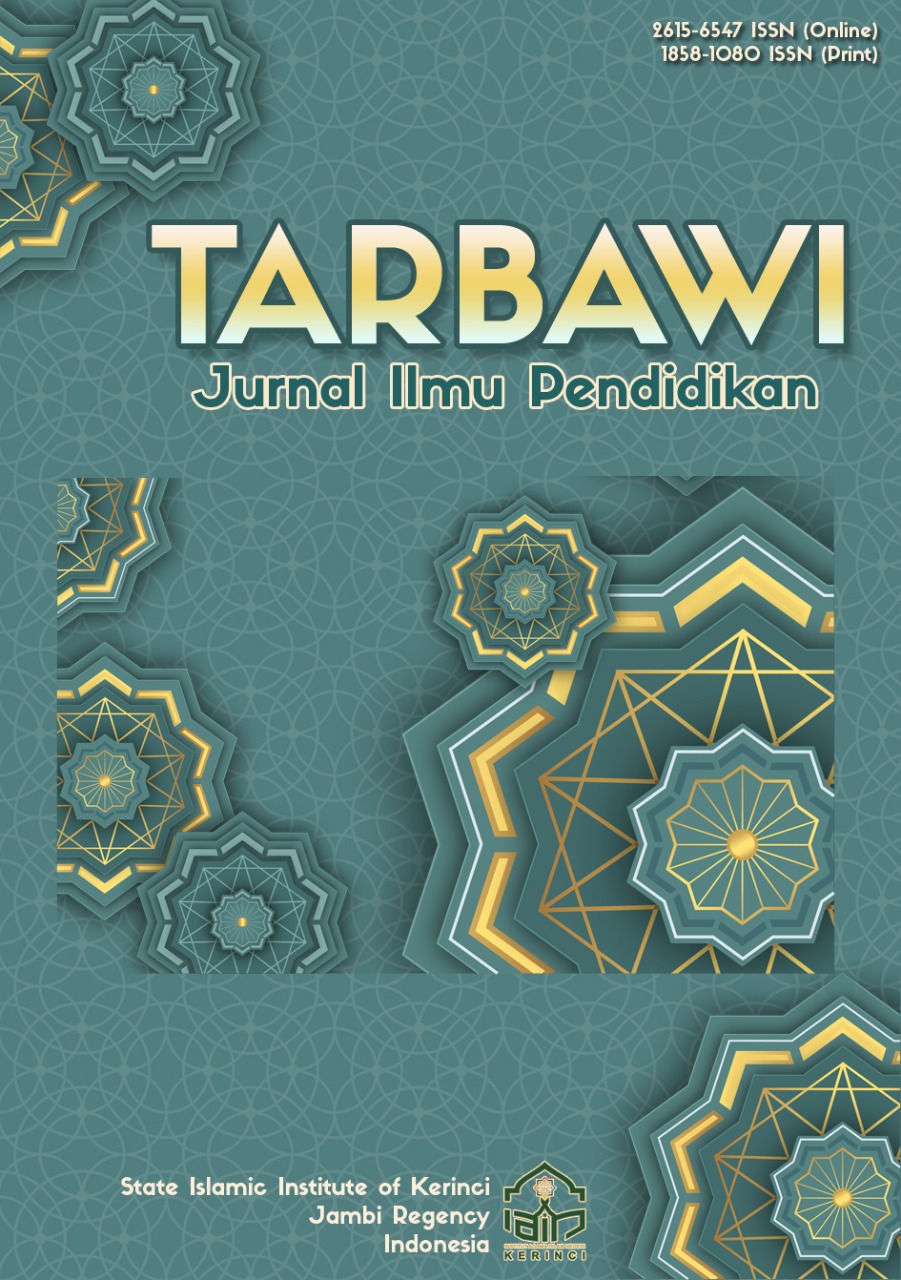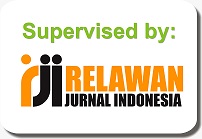Microlearning-Oriented Explainer Videos (MOEV) to Improve Students' Digital Skills in Developing Print Media for Early Childhood
DOI:
https://doi.org/10.32939/tarbawi.v21i1.4997Keywords:
microlearning-orented explainer videos, moev, student digital skill, developing print media, early childhoodAbstract
This research was conducted to produce Microlearning-Oriented Explainer Videos (MOEV) as a learning resource for the development of students' digital competence through early childhood print media. In this study, a Research and Development (R&D) design is used in the development paradigm of ADDIE, which stands for Analysis, Design, Development, Implementation, and Evaluation. The data analysis method used was descriptive percentage analysis. The results of the expert validity test indicated that MOEV was eligible for use as the average validation score achieved by media experts was 97%, material experts was 91%, and learning design experts was 93%. Results of the practicality test showed that the practicality reached a score of 92%. The results show that MOEV is a tremendous and innovative interactive learning medium that students can explore independently to understand in depth using visual and audio materials. Further empirical validation of this research is needed to determine the long-term viability and potential scalability of MOEV to other courses.
Downloads
References
Al-Bhloly, L. A., Almutawkkil, A. Y., & Zahary, A. T. (2024). Micro-Learning (ML): A Comprehensive Survey. 2024 1st International Conference on Emerging Technologies for Dependable Internet of Things (ICETI), 1–15. https://doi.org/10.1109/ICETI63946.2024.10777206
Allela, M. A., Ogange, B. O., Junaid, M. I., & Charles, P. B. (2020). Effectiveness of multimodal microlearning for in-service teacher training. Journal of Learning for Development. https://doi.org/10.56059/jl4d.v7i3.387
Aquino, S. R. A., & Kilag, O. K. T. (2023). Transformative Learning : A Deep Dive into SLAC Sessions and Teacher Empowerment. Excellencia: International Multidisciplinary Journal of Education, 1(5), 498–509.
Bąkała, A., & Bąkała, M. (2020). E-learning course design in the ADDIE methodology as a process in BPMN 2.0. Informatyka Ekonomiczna, 2020(4), 21–32. https://doi.org/10.15611/ie.2020.4.02
Betaubun, M. (2020). Self Assessment on Students’ Digital Competency in Academic Writing Course in Papua Context. Jurnal Pendidikan Progresif, 10(3), 404–416. https://doi.org/10.23960/jpp.v10.i3.202003
Bontisesari, Dewanti, R., & Sulistyaningrum, S. D. (2023). Development of Microlearning-Based and Problem-Solving Infused English Reading Materials for Non-English Major: a Needs Analysis. Asian Journal of Applied Education (AJAE). https://doi.org/10.55927/ajae.v2i2.3782
Cahyani, I. N., & Subiantoro, A. W. (2021). Assessing the Validity and Reliability of the Questionnaire on Student Learning Online Interests in Biology. Proceedings of the 6th International Seminar on Science Education (ISSE 2020), 541. https://doi.org/10.2991/assehr.k.210326.026
Ekayana, A. A. G. (2023). Development of Microlearning-Oriented Explainer Videos on Robotics Learning in Higher Education. Jurnal Ilmu Pendidikan (JIP) STKIP Kusuma Negara, 15(1), 69–83. https://doi.org/10.37640/jip.v15i1.1788
Ferri, F., Grifoni, P., & Guzzo, T. (2020). Online Learning and Emergency Remote Teaching: Opportunities and Challenges in Emergency Situations. Societies, 10(4), 86. https://doi.org/10.3390/soc10040086
Firmansyah, R., Putri, D. M., Wicaksono, M. G. S., Putri, S. F., Widianto, A. A., & Palil, M. R. (2021). Educational Transformation: An Evaluation of Online Learning Due to COVID-19. International Journal of Emerging Technologies in Learning, 16(7), 61–76. https://doi.org/10.3991/ijet.v16i07.21201
Hakim, A. R., Widayati, A., Wibawa, E. A., & Septiana, Y. (2023). The Effectiveness of Digital Literature-Based Learning Video on Improving Student’s Digital Literature Skill. Jurnal Pendidikan Ilmu Sosial, 33(1), 29–42. https://doi.org/10.23917/jpis.v33i1.21782
Isibika, I. S., Zhu, C., Smet, E. De, & Musabila, A. K. (2023). The influence of user-perceived benefits on the acceptance of microlearning for librarians’ training. Research in Learning Technology, 31. https://doi.org/10.25304/rlt.v31.2930
Klochko, A., & Prokopenko, A. (2023). Development of Digital Competence Under The Conditions of Digitalization of Education. Scientific Journal of Polonia University, 56(1), 103–110. https://doi.org/10.23856/5615
Kure, A. E., Brevik, L. M., & Blikstad-Balas, M. (2023). Digital skills critical for education: Video analysis of students’ technology use in Norwegian secondary English classrooms. Journal of Computer Assisted Learning, 39(1), 269–285. https://doi.org/10.1111/jcal.12745
Kustiawan, U., & Yafie, E. (2021). The Effect of Storytelling Assisted by Pop-Up Media to Improve Language Development Skills and Attitude of Opinion. International Journal of Research and Review, 11(18), 114–128. https://doi.org/10.52403/ijrr.20210897
Leong, K. (2022). A Study of Preferred Learning Time of Online Learner in Multimedia Microlearning in Higher Education Context. Online Journal for TVET Practitioners. https://doi.org/10.30880/ojtp.2022.07.02.002
Leong, K., Sung, A., Au, D., & Blanchard, C. (2021). A review of the trend of microlearning. Journal of Work-Applied Management, 13(1), 88–102. https://doi.org/10.1108/JWAM-10-2020-0044
Li, F., Cheng, L., Wang, X., Shen, L., Ma, Y., & Islam, A. Y. M. A. (2025). The causal relationship between digital literacy and students’ academic achievement: a meta-analysis. Humanities and Social Sciences Communications, 12(1), 108. https://doi.org/10.1057/s41599-025-04399-6
Liesa-Orús, M., Latorre-Cosculluela, C., Vázquez-Toledo, S., & Sierra-Sánchez, V. (2020). The Technological Challenge Facing Higher Education Professors: Perceptions of ICT Tools for Developing 21st Century Skills. Sustainability, 12(13), 5339. https://doi.org/10.3390/su12135339
Mawardi, M., Silitubun, E., Edi, W., Butarbutar, I., & Astuty, H. S. (2024). Integrating Digital Literacy into Curriculum for Enhancing Student Engagement in Higher Education. Join: Journal of Social Science, 1(6), 253–265. https://doi.org/10.59613/yt1ge875
Mayer, R. E. (2021). Evidence-Based Principles for How to Design Effective Instructional Videos. Journal of Applied Research in Memory and Cognition, 10(2), 229–240. https://doi.org/10.1016/j.jarmac.2021.03.007
Muktiarni, M., Rahayu, N. I., & Lestari, N. (2023). Animation Videos Promote Health Education for Children and Adolescents. Journal of Advanced Research in Applied Sciences and Engineering Technology, 32(1), 252–262. https://doi.org/10.37934/ARASET.32.1.252262
Ningsih, Y. S., Mulia, M., & Lubis, A. H. (2023). Development of Picture Storybooks with TheoAnthropoEco Centric Approach for Elementary School Students. AL-ISHLAH: Jurnal Pendidikan, 15(2), 1888–1903. https://doi.org/10.35445/alishlah.v15i2.2817
Noriska, N. J., Widyaningrum, R., & Nursetyo, K. I. (2021). Pengembangan Microlearning pada Mata Kuliah Difusi Inovasi Pendidikan di Prodi Teknologi Pendidikan. Jurnal Pembelajaran Inovatif, 4(1), 100–107. https://doi.org/10.21009/JPI.041.13
Nurhayati, S., Fitri, A., Amir, R., & Zalisman, Z. (2024). Analysis of the Implementation of Training on Digital-based Learning Media to Enhance Teachers’ Digital Literacy. AL-ISHLAH: Jurnal Pendidikan, 16(1). https://doi.org/10.35445/alishlah.v16i1.4029
Perdana, R., Yani, R., Jumadi, J., & Rosana, D. (2019). Assessing Students’ Digital Literacy Skill in Senior High School Yogyakarta. JPI (Jurnal Pendidikan Indonesia), 8(2), 169. https://doi.org/10.23887/jpi-undiksha.v8i2.17168
Prasittichok, P., & Smithsarakarn, P. N. (2024). The Effects of Microlearning on EFL Students’ English Speaking: A Systematic Review and Meta-Analysis. International Journal of Learning, Teaching and Educational Research, 23(4), 525–546. https://doi.org/10.26803/ijlter.23.4.27
Rahmawati, A., Suryani, N., Akhyar, M., & Sukarmin. (2020). Developing Self-Assessment Instrument for Measuring Pre-Service Teachers’ Technological Pedagogical Vocational Knowledge. Humanities & Social Sciences Reviews, 8(3), 676–685. https://doi.org/10.18510/hssr.2020.8372
Riyanto, A., & Yunani, E. (2020). The Effectiveness of Video as A Tutorial Learning Media in Muhadhoroh Subject. Akademika, 9(02), 73–80. https://doi.org/10.34005/akademika.v9i02.1088
Romanenko, Y. N., Solodovnikova, E., & Maksimenko, N. (2023). Microlearning as a new method of teaching soft skills to university students. Frontiers in Education. https://doi.org/10.3389/feduc.2023.1177516
Samala, A. D., Bojic, L., Bekiroğlu, D., Watrianthos, R., & Hendriyani, Y. (2023). Microlearning: Transforming Education with Bite-Sized Learning on the Go—Insights and Applications. International Journal of Interactive Mobile Technologies (IJIM), 17(21), 4–24. https://doi.org/10.3991/ijim.v17i21.42951
Sathiyaseelan, B., Mathew, J., & Nair, S. (2024). Microlearning and Learning Performance in Higher Education: A Post-Test Control Group Study. Journal of Learning for Development, 11(1), 1–14. https://doi.org/10.56059/jl4d.v11i1.752
Sihotang, N. T. S., Hasratuddin, H., & Yumiati, Y. (2023). Analisis Kevalidan Perangkat Pembelajaran Berbasis Model Missouri Mathematics Project untuk Meningkatkan Kemampuan Pemecahan Masalah dan Motivasi Siswa SD. Pendas : Jurnal Ilmiah Pendidikan Dasar, 8(2), 5004–5018. https://doi.org/10.23969/jp.v8i2.10137
Smolle, J., Rössler, A., Rehatschek, H., Hye, F., & Vogl, S. (2021). Lecture recording, microlearning, video conferences and lt-platform – medical education during COVID-19 crisis at the medical university of graz. GMS Journal for Medical Education. https://doi.org/10.3205/zma001407
Sözmen, E. Y., Karaca, O., & Batı, A. H. (2023). The effectiveness of interactive training and microlearning approaches on motivation and independent learning of medical students during the COVID-19 pandemic. Innovations in Education and Teaching International. https://doi.org/10.1080/14703297.2021.1966488
Sultan, S., Purnamawati, P., & S. Mandra, M. A. (2022). Pengembangan Model Problem Based Learning Berbasis Multimedia Interaktif Mata Pelajaran Sistem Rem Teknik Kendaraan Ringan di SMK. Jurnal Impresi Indonesia, 1(4), 376–386. https://doi.org/10.36418/jii.v1i4.52
Susilana, R., Dewi, L., Rullyana, G., Hadiapurwa, A., & Khaerunnisa, N. (2022). Can microlearning strategy assist students’ online learning? Jurnal Cakrawala Pendidikan, 41(2), 437–451. https://doi.org/10.21831/cp.v41i2.43387
Varchenko-Trotsenko, L., Vember, V., & Terletska, T. (2019). Main Aspects Of Educational Video Materials Design For Use In Educational Process Of Higher Educational Institutions. Open Educational E-Environment Of Modern University, 7, 119–126. https://doi.org/10.28925/2414-0325.2019.7.12
Yafie, E., Anisa, N., Maningtyas, R. D. T., Iriyanto, T., Jumaat, N. F., & Widiasih, R. M. (2024). Enhancing Early Childhood Educator’s Digital Competencies through AI-Powered Learning Modules (AI-PEL) Training Program. Al-Athfal: Jurnal Pendidikan Anak, 10(1), 73–82. https://doi.org/10.14421/al-athfal.2024.101-07
Yafie, E., Olufunke, O.-F. T., Ali, M., Robbaniyah, I., Maulidia, L. N., & Setyaningsih, D. (2021). The Combination of Imaginative Teaching Methods and Multimedia Learning in Early Childhood Education during COVID Pandemic: Social-Emotional and Language Development. Al-Athfal: Jurnal Pendidikan Anak, 7(1), 1–14. https://doi.org/10.14421/al-athfal.2021.71-01
Yafie, E., Pramono, Sutama, I. W., Samawi, A., Khairuddin, K. F. B., & Asyhari, R. (2024). Development and Validation of a Mobile Application for Early Childhood Nutrition Monitoring: A Multisensor-Based Non-Contact Anthropometric System. Golden Age: Jurnal Ilmiah Tumbuh Kembang Anak Usia Dini, 9(3), 421–433. https://doi.org/10.14421/jga.2024.93-05
Downloads
Published
Issue
Section
License
Copyright (c) 2025 Evania Yafie, Norazrena Abu Samah, Usep Kustiawan, I Wayan Sutama, Tomas Iriyanto

This work is licensed under a Creative Commons Attribution-ShareAlike 4.0 International License.









